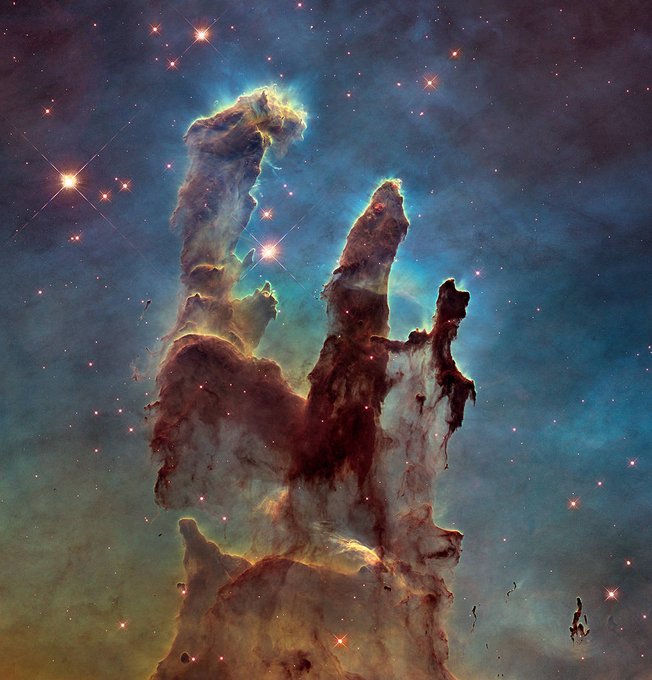NASA,のTwitterイラスト検索結果。 231 件中 11ページ目
This pair of interacting galaxies looks remarkably like a rose.
The galaxies - captured by the Hubble Space Telescope - have merged and as they have done so, gravity has twisted and distorted their shapes.
(NASA, ESA and the Hubble Heritage Team (STScI/AURA))
#Hubble30
The Hubble Space Telescope was launched into orbit #onthisday in 1990. Learn more about the history of Hubble and explore the amazing images that transformed our understanding of the Universe. 📷 © NASA, ESA, Hubble Heritage Team (STScI/AURA) https://t.co/GAo4LoAr10 #Hubble30
The Pillars of Creation
Credits: NASA, ESA and the Hubble Heritage Team (STScI/AURA)
STScI, NASA, ESA, and CSA have decided to further delay the schedule for JWST Cycle 1 GO/AR proposals due to disruptions from COVID-19. For more information: https://t.co/z7vJprbE8B
STScI, NASA, ESA, and CSA have released an important message concerning the impact of the novel coronavirus on the #JWST Cycle 1 deadline. For more information: https://t.co/ywQEOn6TeV
This is Oppy! They are a Cymii, a species that @princeyadon created!! Oppy is a huge fan of NASA, and loves all things space.
Segundo a Nasa, o medo mais comum dos astronautas em missões é flutuar sozinho no espaço sem rumo.
da série: "O contestador da direita"
o mais novo meme:
"hey NASA, are you sure?"
Some say the Air Force is just a myth invented by NASA, much like Austrailia.
Dust, Gas, and Stars in the Orion Nebula!
📷NASA, ESA, Hubble,HLA; Jesús M.Vargas & Maritxu Poyal
#Space #astronomy #Nebula #Stars
Another BNHA request! Context: Just after Shiori and Bakugou start dating, Shiori goes to Inasa to tell him in person, expecting the worst reaction. You should have more faith in Inasa, Shiori! #ArishimaShiori #shinasa #bnhaoc
@nDante , mini comic de su viaje a barcelona, en plan joda no tiene dialogo, pero si se ponen serios esta hecho por la nasa, iluminati, mason , etc ... no se tu correo pero se lo puedes pedir a alberto , se lo envie a el, o vere si se puede por mensaje de twitter ... saludos
An incredible close-up of the star-forming region known as the Tarantula Nebula, courtesy of the Hubble Space Telescope.
Credit: NASA, ESA
















































